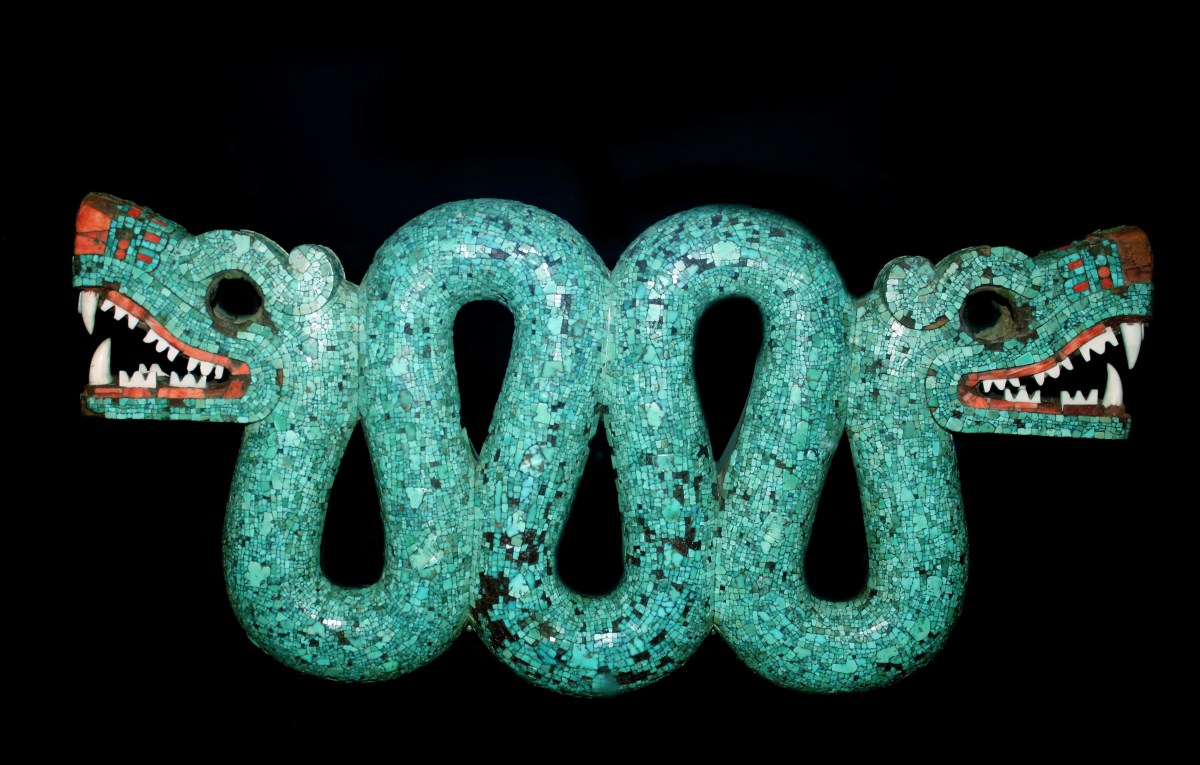For a long time, analysts believed that the Aztec empire and Mixtec cultures must have traded with peoples of the American Southwest for the ancient turquoise found in their art. But Nicholas St. Fleur at The New York Times revealed a study that questions that assumption, which comes from the turquoise mines found throughout the Southwest, including Arizona and New Mexico.
The paper says that during the 1970s and 1990s, archaeologists did a chemical analysis that showed the turquoise came from the northern mines. But in the new study, researchers used modern techniques and analyzed the lead and strontium isotopes in turquoise mosaics from both the Aztec Temple of Mayor in Mexico City as well as Mixteca tiles held by the Smithsonian’s National Museum of the American Indian. They discovered that the chemical signatures of the turquoise matched the geology of Mesoamerica, not the Southwest, which suggests that the Aztec and Mixtec got their supplies of the blue-green rock locally, not from remote mines.
Thanks for reading InsideHook. Sign up for our daily newsletter and be in the know.


















